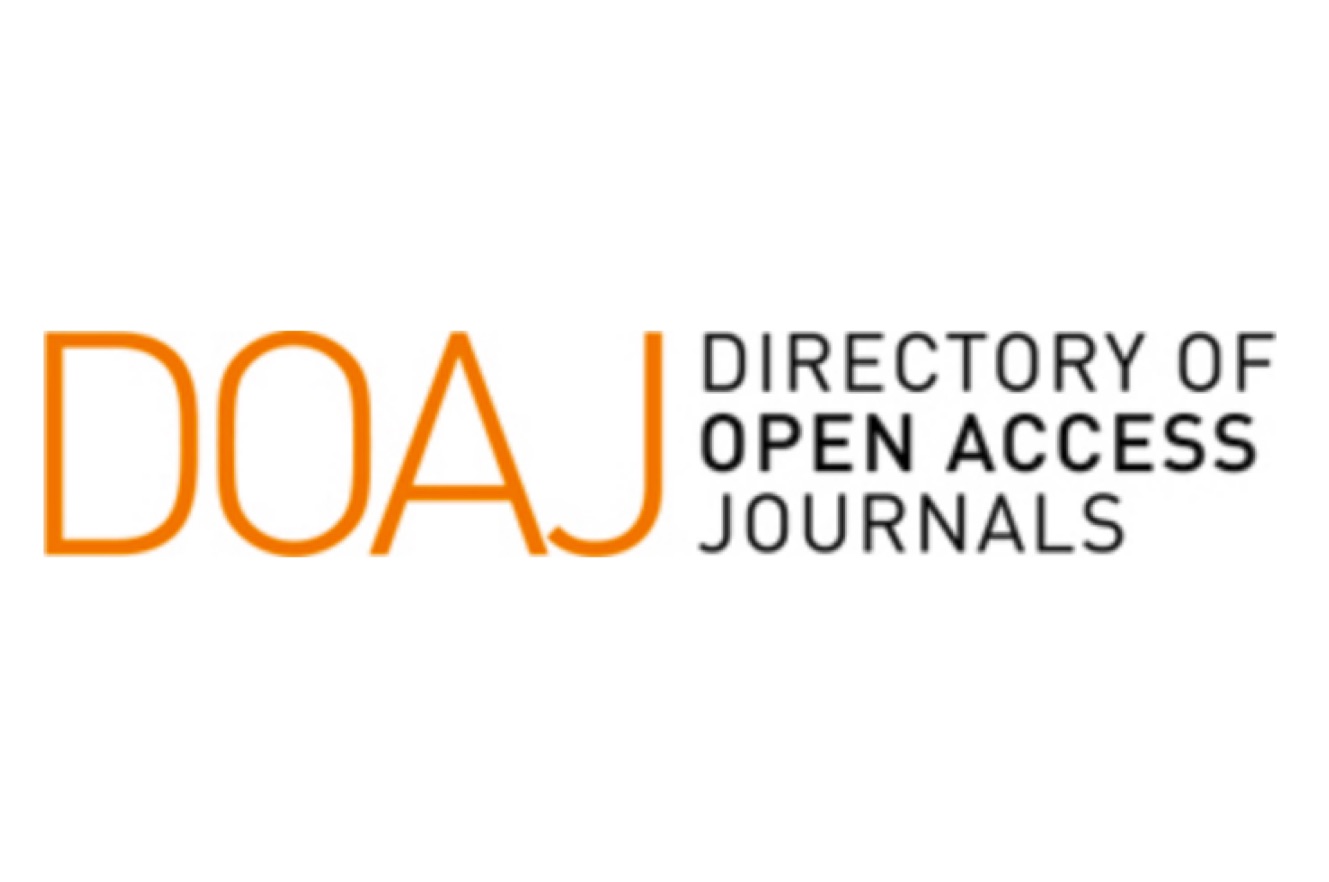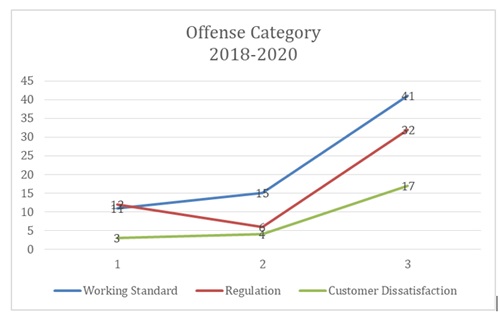KONSENTRASI SPASIAL, AGLOMERASI DAN PRODUKTIVITAS PERUSAHAAN INDUSTRI MANUFAKTUR INDONESIA
Downloads
Abstract
This study aims to analyze the impact of agglomeration in the form of localization economies and urbanization economies on the productivity of manufacturing industrial companies in Indonesia. Unlike previous studies, this study will look at the effect of technology level on the relationship between productivity and agglomeration by classifying research samples into low-tech and high-tech industries. In addition, this study also improves the estimation technique by addressing the endogeneity problem that has the potential to arise in estimating the relationship between productivity and agglomeration to be overcome by using instrument variable (IV). The study was conducted in two stages of estimation using company-level panel data from 2010 to 2014. First, productivity was measured at the company level using Total Factor Productivity (TFP). Then, the company productivity is estimated together with the company and industry characteristic variables, including the agglomeration measurement variable which represents localization economies and urbanization economies. The regression results show a positive impact from localization economies and a negative impact from urbanization economies.
Abstrak
Penelitian ini bertujuan menganalisis dampak aglomerasi berupa localization economies dan urbanization economies terhadap produktivitas perusahaan industri manufaktur di Indonesia. Berbeda dengan penelitian terdahulu yang juga meneliti dampak aglomerasi industri terhadap produktivitas perusahaan, pada penelitian ini akan melihat pengaruh tingkat teknologi terhadap hubungan produktivitas dan aglomerasi dengan mengklasifikasikan sampel penelitian ke dalam industri berteknologi rendah dan industri berteknologi tinggi. Selain itu, peneltian ini juga memperbaiki teknik estimasi dari penelitian sebelumnya dengan menangani masalah endogenitas yang berpotensi muncul dalam mengestimasi hubungan produktivitas dan aglomerasi akan diatasi dengan penggunaan instrument variable (IV). Penelitian dilakukan dalam dua tahap estimasi dengan menggunakan data panel level perusahaan dari tahun 2010 sampai 2014. Pertama, produktivitas diukur pada level perusahaan dengan menggunakan Total Factor Productivity (TFP). Kemudian, produktivitas perusahaan diestimasi bersama variabel karakteristik perusahaan dan industri, termasuk variabel pengukuran aglomerasi yang mewakili localization economies dan urbanization economies. Hasil regresi menunjukkan adanya dampak positif dari localization economies dan dampak negatif dari urbanization economies.
Downloads
P. Martin, T. Mayer, F. Mayneris, P. Martin, T. Mayer, and F. Mayneris, "Spatial concentration and plant-level productivity in France,” J. Urban Econ., vol. 69, no. 2, pp. 182–195, 2011.
S. Ke, "Agglomeration, productivity, and spatial spillovers across Chinese cities,” Ann. Reg. Sci. 2009 451, vol. 45, no. 1, pp. 157–179, Jan. 2009, doi: 10.1007/S00168-008-0285-0.
M. Andersson and H. Lööf, "Agglomeration and productivity: Evidence from firm-level data,” Ann. Reg. Sci., vol. 46, no. 3, pp. 601–620, 2011, doi: 10.1007/s00168-009-0352-1.
A. Ciccone and R. E. Hall, "Productivity and the Density of Economic Activity,” Am. Econ. Rev., vol. 86, no. 1, pp. 54–70, 1996, doi: 10.2307/2118255.
C. Hu, Z. Xu, and N. Yashiro, "Agglomeration and productivity in China: Firm level evidence,” China Econ. Rev., vol. 33, pp. 50–66, Apr. 2015, doi: 10.1016/j.chieco.2015.01.001.
P. R. Krugman, Krugman, and Paul, "What's New about the New Economic Geography?,” Oxford Rev. Econ. Policy, vol. 14, no. 2, pp. 7–17, 1998.
E. L. Glaeser, H. D. Kallal, J. A. Scheinkman, and A. Shleifer, "Growth in Cities,” J. Polit. Econ., vol. 100, no. 6, pp. 1126–1152, 1992, doi: 10.1086/261856.
Gilles Duranton and D. Puga, "Micro-foundations of Urban agglomeration economies,” Handb. Reg. Urban Econ., 2003, Accessed: Jun. 14, 2020. [Online]. Available: https://www.nber.org/papers/w9931.
C. Beaudry and A. Schiffauerova, "Who's right, Marshall or Jacobs? The localization versus urbanization debate,” Res. Policy, vol. 38, no. 2, pp. 318–337, 2009, doi: 10.1016/j.respol.2008.11.010.
J. V. Henderson, Henderson, and J. Vernon, "Marshall's scale economies,” J. Urban Econ., vol. 53, no. 1, pp. 1–28, 2003.
H.-L. Lin, H.-Y. Li, C.-H. Yang, H.-L. Lin, H.-Y. Li, and C.-H. Yang, "Agglomeration and productivity: Firm-level evidence from China's textile industry,” China Econ. Rev., vol. 22, no. 3, pp. 313–329, 2011.
A. Kuncoro, "Spatial Agglomeration, Firm Productivity, and Government Policies in Indonesia: Concentration and Deconcentration in the Manufacturing Sector,” in Reshaping Economic Geography in East Asia, 2009, pp. 156–168.
W. Widodo, R. Salim, and H. Bloch, "Agglomeration economies and productivity growth in manufacturing industry: Empirical evidence from Indonesia,” Econ. Rec., vol. 90, no. S1, pp. 41–58, 2014, doi: 10.1111/1475-4932.12115.
"IBS.” https://mikrodata.bps.go.id/mikrodata/index.php/catalog/IBS (accessed Aug. 15, 2020).
R. Nakamura and C. J. Morrison Paul, "Measuring agglomeration,” in Handbook of Regional Growth and Development Theories, Edward Elgar Publishing Ltd., 2009, pp. 305–328.
C. Altomonte and G. Békés, "Trading activities, firms and productivity,” Bocconi Univ. Milan, Hungarian ..., no. September, 2008, [Online]. Available: http://test.mktudegy.hu/files/BekesG.pdf.
G. Békés and P. Harasztosi, "Agglomeration premium and trading activity of firms,” Reg. Sci. Urban Econ., vol. 43, no. 1, pp. 51–64, 2013, doi: 10.1016/j.regsciurbeco.2012.11.004.
K. Frenken, F. Van Oort, and T. Verburg, "Related variety, unrelated variety and regional economic growth,” Reg. Stud., vol. 41, no. 5, pp. 685–697, 2007, doi: 10.1080/00343400601120296.
R. Capello, "Entrepreneurship and spatial externalities: Theory and measurement,” in Annals of Regional Science, 2002, vol. 36, no. 3, pp. 387–402, doi: 10.1007/s001680200106.
T. P. Torres Gutierrez and J. A. Ordóñez, "Agglomeration economies and urban productivity,” REGION, vol. 6, no. 1, pp. 17–24, Jan. 2019, doi: 10.18335/region.v6i1.242.
K. Badr, R. Rizk, and C. Zaki, "Firm productivity and agglomeration economies: evidence from Egyptian data,” Appl. Econ., vol. 51, no. 51, pp. 5528–5544, Nov. 2019, doi: 10.1080/00036846.2019.1613506.
Z. G. Tareke, "Estimating the E ect of Urban Environment on Swedish Firm Productivity,” 2011.
E. Bbaale, "Firm-level productivity and exporting in Uganda's manufacturing sector,” African J. Econ. Manag. Stud., vol. 2, no. 2, pp. 220–242, 2011, doi: 10.1108/20400701111165650.
J. De Loecker, "Detecting Learning by Exporting,” Am. Econ. J. Microeconomics, vol. 5, no. 3, pp. 1–21, 2013, doi: 10.1257/MIC.5.3.1.
C. Newman, J. Rand, F. Tarp, and N. T. T. Anh, "Exporting and productivity: Learning from Vietnam,” J. Afr. Econ., vol. 26, no. 1, pp. 67–92, 2017, doi: 10.1093/jae/ejw021.
M. Azari, H. Kim, J. Y. Kim, and D. Ryu, "The effect of agglomeration on the productivity of urban manufacturing sectors in a leading emerging economy,” Econ. Syst., vol. 40, no. 3, pp. 422–432, Sep. 2016, doi: 10.1016/j.ecosys.2015.08.005.
N. Najkar, M. R. Kohansal, and M. Ghorbani, "Impact of Industrial Agglomeration on Productivity: Evidence from Iran's Food Industry,” Chinese Geogr. Sci., vol. 30, no. 2, pp. 309–323, Apr. 2020, doi: 10.1007/s11769-019-1087-2.
JMIL Jurnal Manajemen Industri dan Logistik (Journal of Industrial and Logistics Management) is an Open Access Journal. The authors who publish the manuscript in JMIL Jurnal Manajemen Industri dan Logistik agree to the following terms:

JMIL Jurnal Manajemen Industri dan Logistik is licensed under a Creative Commons Attribution 4.0 International License. This permits anyone to copy, redistribute, remix, transmit and adapt the work provided the original work and source is appropriately cited.
This means:
(1) Under the CC-BY license, authors retain ownership of the copyright for their article, but authors grant others permission to use the content of publications in JMIL Jurnal Manajemen Industri dan Logistik in whole or in part provided that the original work is properly cited. Users (redistributors) of JMIL Jurnal Manajemen Industri dan Logistik are required to cite the original source, including the author's names, JMIL Jurnal Manajemen Industri dan Logistik as the initial source of publication, year of publication, volume number, issue, and Digital Object Identifier (DOI); (2) Authors grant JMIL Jurnal Manajemen Industri dan Logistik the right of first publication. Although authors remain the copyright owner.




























